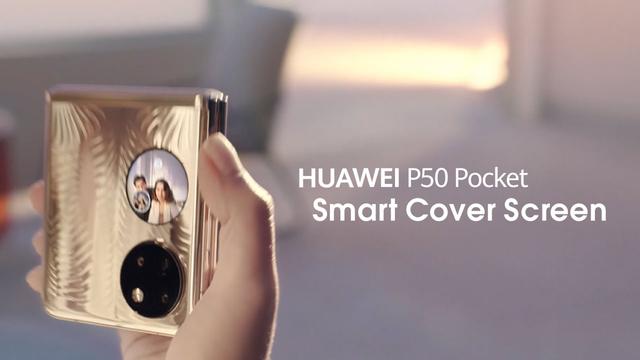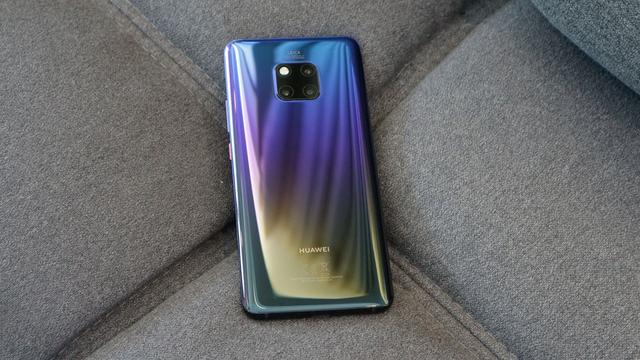
Huawei’s New Gadgets Look Cool As Hell, but Good Luck Buying Them
Huawei today announced a bunch of new devices, but like most of its products, folks living in the U.S. probably won’t be able to buy them anytime soon (if at all). And unfortunately these aren’t the type of gadgets where you can easily find an alternative; we’re talking about a new foldable phone with an eye-catching design, the latest in Huawei’s critically praised MateBook X laptop series, and a pair of smart glasses with cervical spine health features.
Here is a rundown of what most of us will likely miss out on.
Huawei P50 Pocket
Let’s start with the glitzy P50 Pocket, a foldable with a similar shape as Samsung’s Galaxy Z Flip 3 but with a circular 1-inch external screen for notifications and widgets. The exterior is all glamour, available in gold with a pattern on the front that resembles feathers, or silver/white with a textured diamond pattern.
Digging into the specs, the phone has a 6.9-inch OLED display at a 21:9 aspect ratio when unfolded. The panel sports a 120Hz refresh rate so fast-moving objects should look smooth as they shift from one half of the panel to the other. Powering the phone is a Qualcomm Snapdragon 888 SoC and keeping it powered is a 4000 mAh battery that supports 40W super-fast charging.
On the back of the phone (when closed), is a triple camera array next to the mini screen that consists of a 40-megapixel main sensor, a 13-MP ultra-wide-angle lens, and what Huawei calls a 32-MP “super spectrum” lens for capturing a wider range of colours. There is a 10.7-megapixel front-facing hole-punch camera in the main display, but you probably won’t need it because you can take a selfie with the main camera when the phone is closed and use the circular cutout display as a viewfinder.

The P50 Pocket runs on Hauwei’s Harmony OS 2, an Android replacement created after the U.S. blacklisted the Chinese electronics maker, a policy that led to Huawei and others losing access to Google’s mobile OS. The P50 Pocket will go on sale in China today for ¥8,988 (or around $US1,400 ($1,933)) for a model with 8GB of RAM and 256GB of storage. Upgrading to 12GB of RAM and 512GB of storage raises the price to ¥10,988 (around $US1,700 ($2,347)).
Huawei MateBook X Pro
Prior to Huawei being blacklisted, some of the best Windows laptops in the U.S. were made by the Chinese electronics company with its MateBook X series. Now the company is launching a new Huawei MateBook X Pro for 2022 with some impressive specs, including a 14.2-inch, 3120 x 2080-pixel (3:2) touchscreen at a 90Hz refresh rate. Huawei says the laptop can reach up to an impressive 500 nits of brightness and cover 100% of the DCI-P3 colour gamut.
Image: HuaweiThe notebook is fairly portable for 14-incher, weighing in at around 1 kg and measuring 0.6 inches. Interestingly, the MateBook X Pro runs on 11th-gen Intel chips, not the 12th-gen processors we’re expecting soon; graphics are integrated Iris Xe while RAM and storage go up to 16GB and 1TB, respectively. The laptop doesn’t ship with Windows 11 like most other new notebooks and will instead come with Windows 10.
Available in China today, a Core i5 model with 16GB of RAM and a 512GB SSD will cost CNY 9,499 ($US1,490 ($2,057)) while a Core i7 config with a 1TB SSD goes for CNY 12,499 ($US1,961 ($2,708)).
Huawei Eyewear
Huawei also expanded its collection of wearables with a new pair of smart glasses. Similar to the Bose Frames, these shades come with 128mm speakers in the temples so you can listen to music, chat on phone calls, or get directions from the virtual assistant. That assistant is Huawei’s Celia and it runs on HarmonyOS, making these the first smart glasses to use Huawei’s proprietary software.
There are three frame types: rectangular, vintage round, and aviator. I’m no fashion icon, but I really like how all of these look and could see myself wearing the aviators around without feeling silly.
Image: HuaweiWhat’s cool is that the frames can actually be swapped, so instead of having to buy a bunch of different glasses for different occasions, you can pop off the frames and replace them with another. It’s a clever feature, and one I’d use to pop on some blue light-filtering glasses at home then swap to sunglasses to protect me from the brutal Texas sun. Huawei says there are a dozen different frames available for its smart glasses.
Perhaps my favourite feature is designed to protect the integrity of your cervical spine by alerting you when your head is in a downward position for too long. It can also determine your weight-bearing status (the further forward your head is, the more weight is placed on your spine) and spit out a report about the overall health of your spine. It’s another feature I’d use as someone who’s had spinal problems, and often catch myself looking down at my phone in awkward positions for too long.
Alas, these are launching today exclusively in China at 1,699 CNY ($US267 ($369)) for normal glasses or 1,899 CNY ($US298 ($411)) for sunglasses. We’ve reached out to Huawei to ask about the availability of any of these products in other regions and will update this article once we learn more.
}})